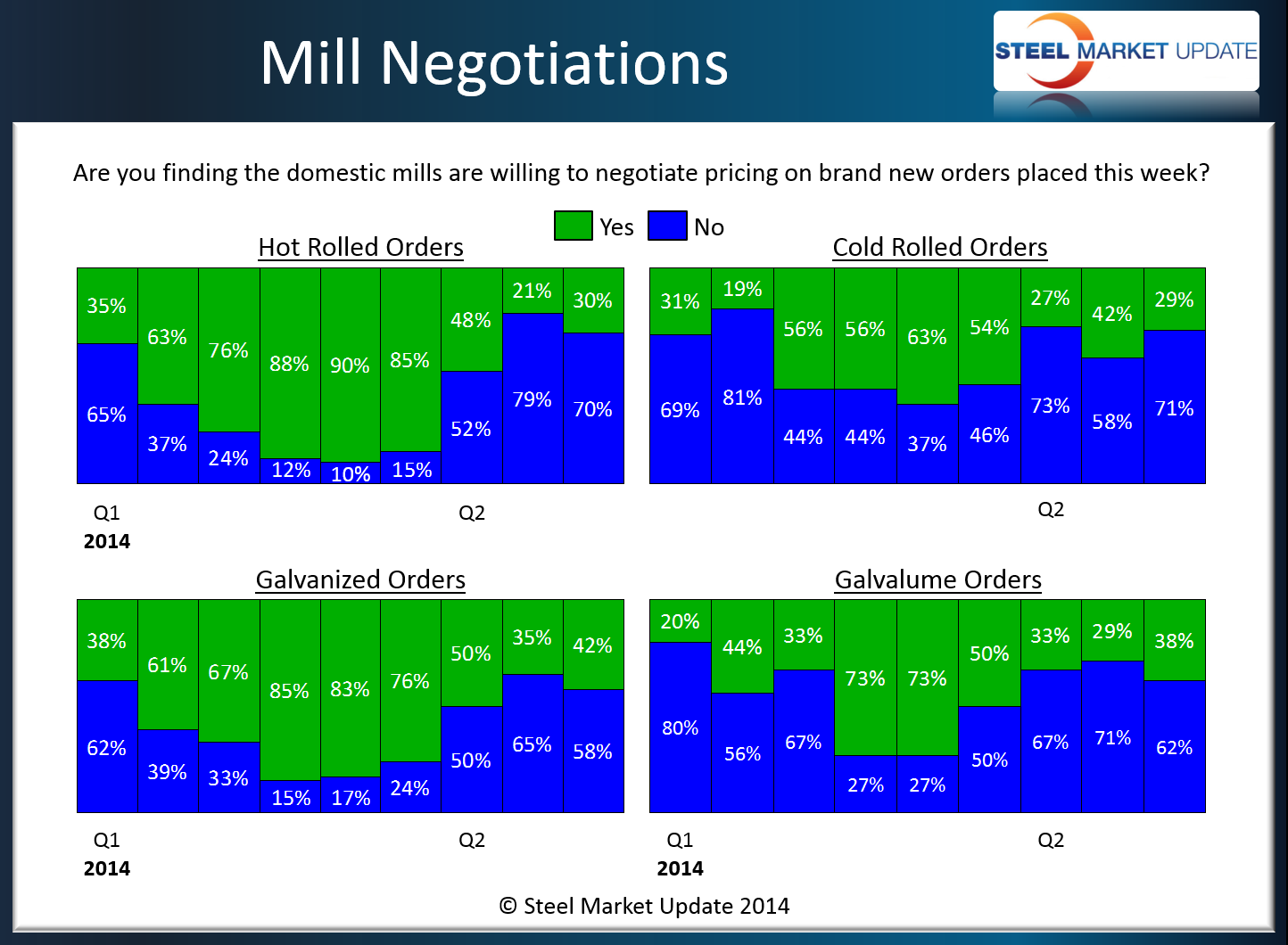SMU Data and Models

Mill Price Negotiations Show Continued Resolved by Steel Mills
Written by John Packard
May 8, 2014
The domestic steel mills continue to be united in their approach to negotiating flat rolled steel pricing. Based on data collected this week from our flat rolled steel market survey, we found that only 30 percent of the respondents were reporting the domestic mills as willing to negotiate hot rolled steel pricing. This is up from the cycle low of 21 percent reported during the middle of April. The cold rolled response rate pulled back from 42 percent in mid-April to 29 percent this week. Galvanized was the most negotiable items according to our respondents with 42 percent reporting the mills as willing to discuss GI prices. Galvalume came in at 38 percent.
With lead times potentially pulling back on hot rolled and cold rolled we will need to watch negotiations very carefully to see if the mills break ranks and begin to get more aggressive in their pricing, which would be reflected in our Negotiations data in future reports.

John Packard
Read more from John PackardLatest in SMU Data and Models

SMU Survey: Sheet lead times ease further, plate hits one-year high
Steel buyers responding to this week’s SMU market survey report a continued softening in sheet lead times. Meanwhile, plate lead times have moderately extended and are at a one-year high.

SMU Survey: Buyers report more price flexibility from mills
Nearly half of the steel buyers responding to this week’s SMU market survey say domestic mills are showing increased willingness to negotiate pricing on new spot orders. This marks a significant shift from the firmer stance mills held in prior weeks.

SMU Survey: Buyers’ Sentiment Indices fall
Current Sentiment Index dropped six points to +42 this week compared to two weeks earlier. It has fallen in every successive survey since reaching a 2025 high of +66 on Feb. 19.

March service center shipments and inventories report
Steel service center shipments and inventories report through March 2024.

Apparent steel supply contracts in February
The amount of finished steel that entered the US market in February receded from January’s peak, according to our analysis of Department of Commerce and American Iron and Steel Institute (AISI) data.

